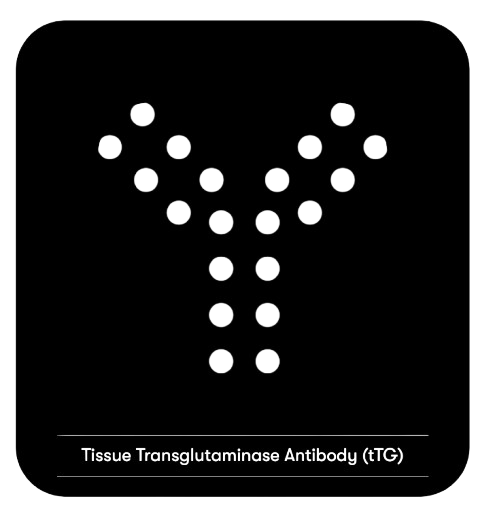You will not be allowed to compare more than 4 products at a time
View compareDescription
Results You Can Trust
Reviews
Is this test for me?
How It Works
Laboratory Testing Process
Description
Tissue Transglutaminase Antibody (tTG)
83% of Americans with celiac disease are undiagnosed or misdiagnosed with other conditions. Find out today if celiac disease is at the root of your patient’s health challenges.
- Gold Standard Testing for Celiac
The average person will suffer for 6 to 10 years before they are correctly diagnosed with celiac. This is largely because they never get tested. If you have a family member with celiac there is a 22% probability that you have celiac as well. Most people will suffer with celiac and spend over $14,000 attempting to resolve their issue. Add this test to your Bloodprint® along with the Gluten sensitivity test to determine whether or not your issues are from a gluten-intolerance or if you have celiac disease.
Fastest Certified Lab Results In The Industry
Once our lab receives your specimen, results will be completed in 48-72 hours. Results are available on our online portal for physicians and emailed as an easy-to-read PDF.
Results You Can Trust
Results You Can Trust.
By providing expedited lab results (48-72 hours) for up to 207 trigger foods and environmental allergies based on a unique Bloodprint®, patients can quickly eliminate reactive food items to optimize their health and well-being.
Results: studies’ findings, abundant testimonials, money-back guarantee, precision of instruments, and longevity of expertise.

Accuracy
Immuno Labs works from its own laboratory facility to provide a 100% accurate personal Bloodprint based on precise blood draw for 207 food sensitivities.

Experience
Our founders have 43-years of industry experience since 1978 as early innovators of personalized medicine. We have conducted over 51 million food sensitivity tests.

Empowerment
Immuno Labs provides the customer and physician with the power of awareness through sensitivity testing and ongoing support to identify and treat chronic health conditions.

Support
Immuno Labs provides ongoing guidance for clients through the BetterHealthUSA community, meal plans, recipes, shopping lists, 90-day nutritional coaching, community, and education.





